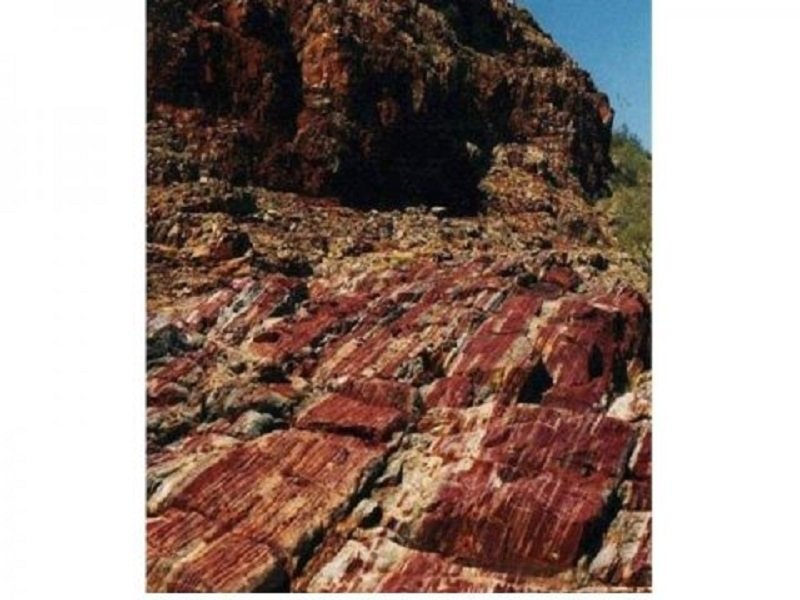
© A. GliksonMarble Bar sediments, a microcrystalline silicone-rich chert.
Tiny glass beads called spherules, found in north-western Australia were formed from vaporised material from the asteroid impact, said Dr Andrew Glikson from The Australian National University (ANU).
"The impact would have triggered earthquakes orders of magnitude greater than terrestrial earthquakes, it would have caused huge tsunamis and would have made cliffs crumble," said Dr Glikson, from the ANU Planetary Institute.
"Material from the impact would have spread worldwide. These spherules were found in sea floor sediments that date from 3.46 billion years ago."
The asteroid is the second oldest known to have hit the Earth and one of the largest.
Dr Glikson said the asteroid would have been 20 to 30 kilometres across and would have created a crater hundreds of kilometres wide.
About 3.8 to 3.9 billion years ago the moon was struck by numerous asteroids, which formed the craters, called mare, that are still visible from Earth
"Exactly where this asteroid struck the earth remains a mystery," Dr Glikson said.
"Any craters from this time on Earth's surface have been obliterated by volcanic activity and tectonic movements."
Comment: Our world has fallen victim to comets, fireballs, asteroids and meteorites on a continual basis for all of its existence.
For an in-depth look at how these extraterrestrial insults have affected our civilisations - ancient and not so ancient - head to our
Comets and Catastrophes section for a number of articles on the topic. You can also visit our Red Pill Press store to pick up a copy of Laura Knight-Jadczyk's book,
Comets and the Horns of Moses to get an understanding of how the evidence of these events gave birth to mythology and how certain schools of philosophical thought were either suppressed or promoted in order to cover up the truth of a
human cosmic connection in order for the psychopaths who rule our world to continue to do so without blowback from the masses.
Comment: Our world has fallen victim to comets, fireballs, asteroids and meteorites on a continual basis for all of its existence.
For an in-depth look at how these extraterrestrial insults have affected our civilisations - ancient and not so ancient - head to our Comets and Catastrophes section for a number of articles on the topic. You can also visit our Red Pill Press store to pick up a copy of Laura Knight-Jadczyk's book, Comets and the Horns of Moses to get an understanding of how the evidence of these events gave birth to mythology and how certain schools of philosophical thought were either suppressed or promoted in order to cover up the truth of a human cosmic connection in order for the psychopaths who rule our world to continue to do so without blowback from the masses.